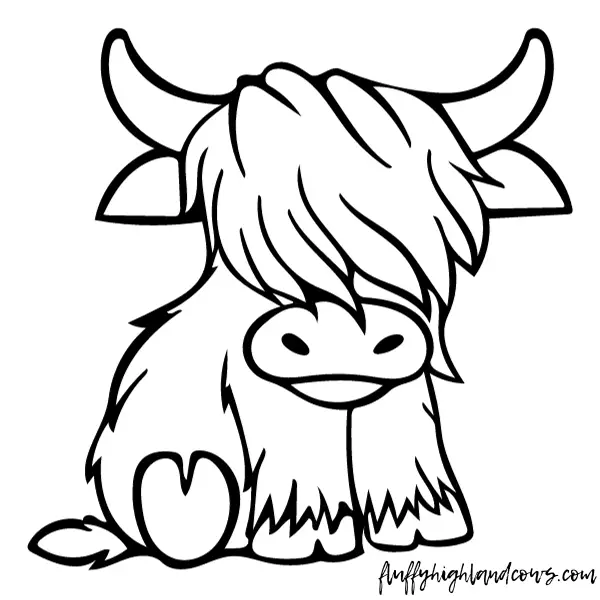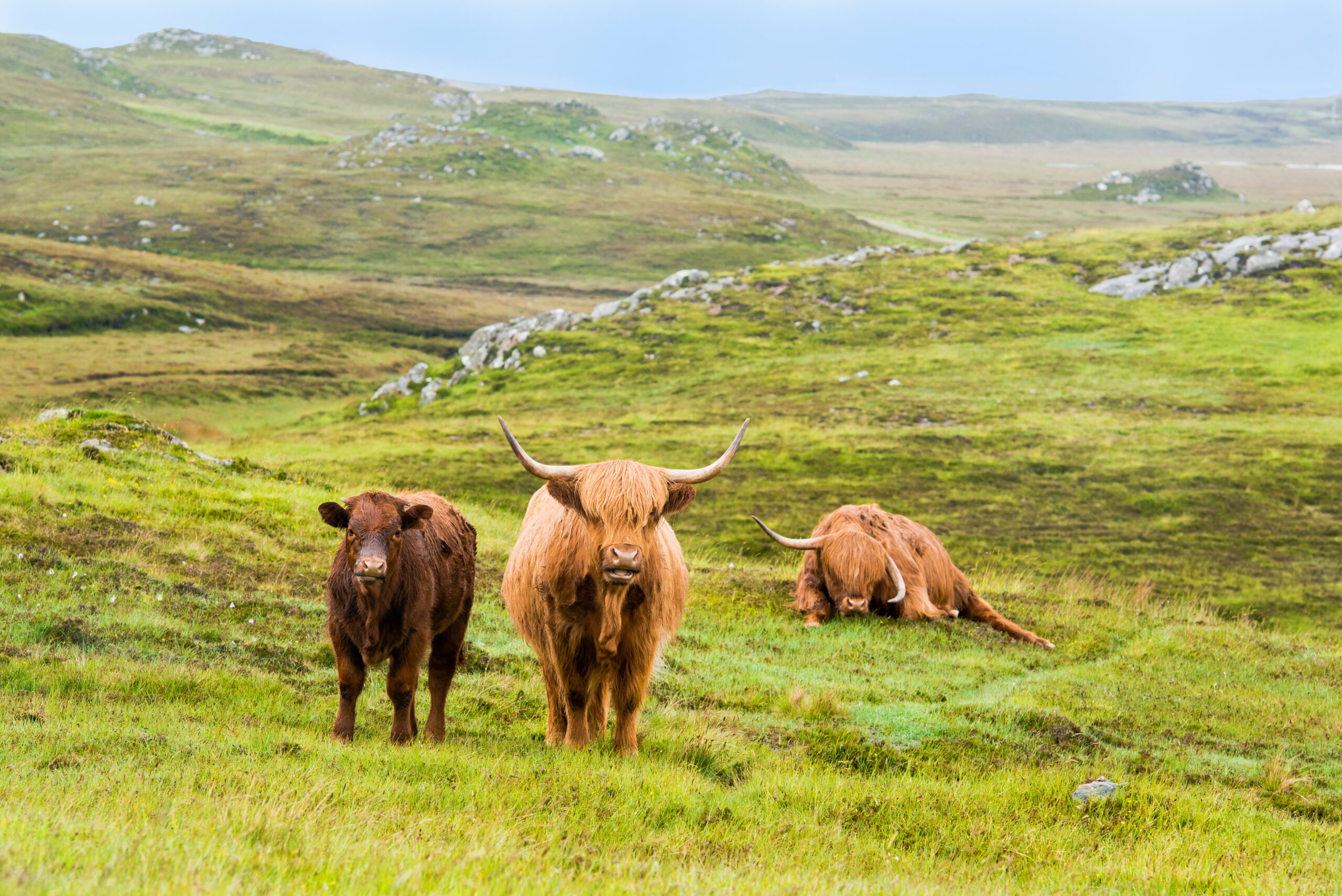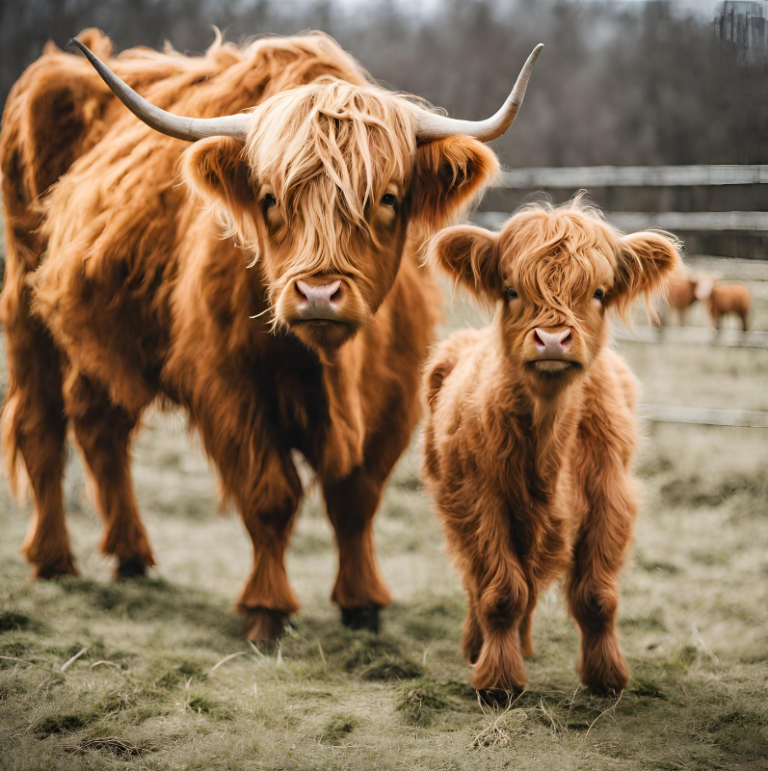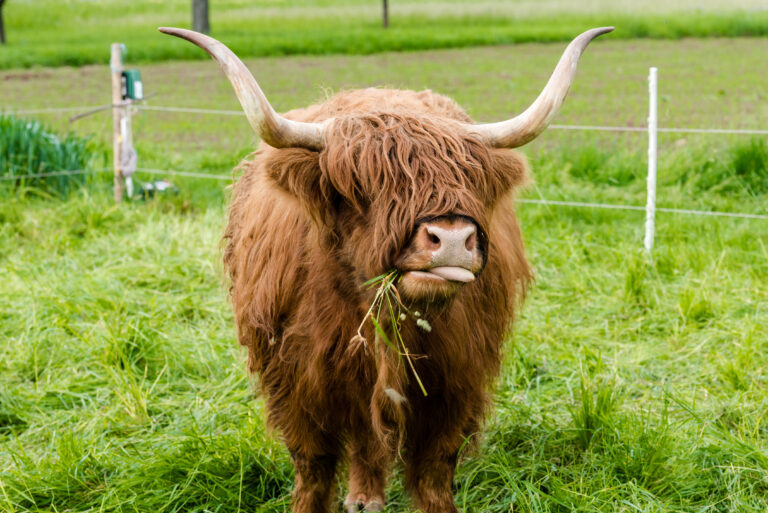The Enduring Legacy of Highland Cattle: A Testament to Natural Resilience and Nutritional Excellence
Highland cattle, with their origins deeply rooted in the rugged terrains of Scotland, have been a symbol of endurance and adaptability since as early as the ninth century. This breed, forged in the unforgiving climates of the Scottish Highlands, underwent a rigorous process of natural selection, ensuring that only the most robust and adaptable specimens contributed to its lineage.
Initially distinguished by their origins and color variations, the smaller, black Kyloes from the western islands and the larger, primarily red cattle from the Highlands, have now unified under the single breed of Highland cattle, encompassing a variety of colors including yellow, white, and dun.
The late 1890s marked the breed’s introduction to the United States, a move initiated by western cattlemen aiming to bolster the resilience of their herds with the hardy genetics of the Highland cattle.
Care, Feeding, and Natural Husbandry
Highland cattle are renowned for their low maintenance and self-sufficiency. Their innate foraging capabilities allow them to flourish even in the most challenging grazing conditions, outlasting other breeds in periods of scarcity.
At many American farms, Highland cattle are nurtured beyond mere survival, thriving on a diet of natural grasses, hay, and a supplemental mix of vitamins, salt, and molasses to promote optimal health and growth.
The distinctive large horns of both sexes afford them ample personal space, while their protective yet docile nature ensures the safety of their calves without compromising their approachability.
The rigorous health standards at Flathead Farms preclude the use of artificial growth hormones or stimulants, with all calves receiving vaccinations and worm treatments in accordance with QHB standards upon weaning.
This commitment to natural rearing practices is evident in the robust health and vigor of the Highland breed, whose double-layered coat negates the need for a thick fat layer, resulting in lean, high-quality beef.
Nutritional Superiority of Highland Beef
Highland beef sets a new standard for nutritional excellence, boasting lower fat levels than many common protein sources, including snapper, pork loin, and commercial beef. Its cholesterol content is also impressively low, surpassing that of buffalo, codfish, and even chicken.
The distinction between grass-fed and grain-fed beef further underscores the nutritional advantages of Highland beef, with grass-fed beef offering reduced fat and calories, higher omega-3 fatty acids, and a more favorable omega-6 to omega-3 ratio. Notably, grass-fed beef is rich in conjugated linoleic acid (CLA), vitamin E, and beta-carotene, contributing to its potential as a powerful component of a cancer-preventative diet.
The comprehensive benefits of grass-fed beef extend beyond its lower fat and calorie content, encompassing significant increases in omega-3 fatty acids, CLA, and essential vitamins. The lush pastures grazed by Highland cattle provide a nutrient-rich diet that far surpasses the standard feedlot fare, resulting in beef that is not only healthier but also more environmentally sustainable.
With its exceptional nutritional profile, grass-fed Highland beef emerges as a superior choice for a heart-healthy diet, rivaling even the most recommended cuts of chicken in terms of fat content while offering greater omega-3s, lower cholesterol, and an abundance of CLA.
A Remarkable Breed
In conclusion, Highland cattle represent a remarkable blend of historical resilience, sustainable farming practices, and unparalleled nutritional benefits. As consumers increasingly seek out healthy, ethically raised meat options, Highland beef from grass-fed sources stands out as a premium choice, offering a delicious and nutritious alternative that supports both personal health and environmental stewardship.







